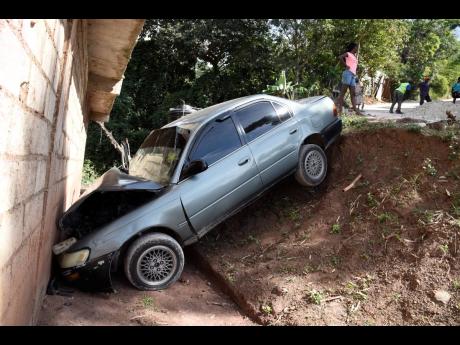Handling driving emergencies
Emergencies may arise even while we drive defensively on the roads. The MacMillan School dictionary describes the concept of emergency as, “an unexpected situation in which immediate action is necessary, often because of danger.” According to Keith Austin, auto electrician/mechanic, if one is driving along and all of a sudden his car may hit something, there are three things to do; turn, speed up or stop.
TURN AWAY
If you feel you will not be able to stop in time. Run off the road if possible. Remember, if you can keep from using the brakes while turning, this will lessen the chances of picking up a skid.
SPEED UP QUICKLY
There are times when you need to speed up in order to avoid a collision. This is the case where another vehicle is about to hit you from behind, or from the side. With a standard transmission, put the car into a lower gear and push the gas pedal to the floor. With the automatic transmission, push the gas pedal to the floor.
STOP QUICKLY
Try not to break hard and hold. “This action may lock your wheels and cause skidding. Simply pump your brakes, as this will give you a better control in steering.
OTHER FACTORS TO CONSIDER:
1. Running off the pavement: if your vehicle drifts onto the shoulder of the road, do not try to turn back onto the pavement right away. This may throw the vehicle off balance. Instead, stay on the shoulder and ease up on the gas pedal. After you have slowed down, turn back onto the pavement slowly and cautiously.
2. Brake failure: If your brakes suddenly give out, shift to a lower gear and pump the brake pedal fast and hard several times. This will build up enough brake pressure to stop the car. If it does not work, use the parking brake.
3. Car fires: “Many car fires are caused by short circuits in the electrical system, says Keith Austin, auto electrician. In case of a fire, get the passengers out as quickly as possible, and away from the vehicle. If there is no fire extinguisher, try to smother the burning wires with heavy cloth, dirt or sand. Do not attempt to use water to put out an electrical fire. Never grip burning wires with your bare hands. Call for help. ‘ Fire! Fire! Fire!’
4. Plunging into water: It is often said ‘Water is life’. However, it can create panic in an emergency. Keep in mind that a car with windows and doors closed will float from say 3 to 10 minutes. The best escape is through a window. It is hard to open a door against water pressure; but a window can be rolled down easily. Cars with power windows may short out, so try to open them at once. A front engine car will sink nose first. If you cannot get out through a window, try opening a door.
5. Tyre blowout: If you have a flat tyre or a blowout, hold the steering wheel firmly, and keep the car going straight. Slow down gradually. Take your foot off the gas pedal and do not apply the brakes. Allow the car to slow down on its own.
6. Gas pedal failure: If, unfortunately, your gas pedal sticks, keep your eyes on the road. Quickly shift to neutral then pull off the road as soon as possible.


